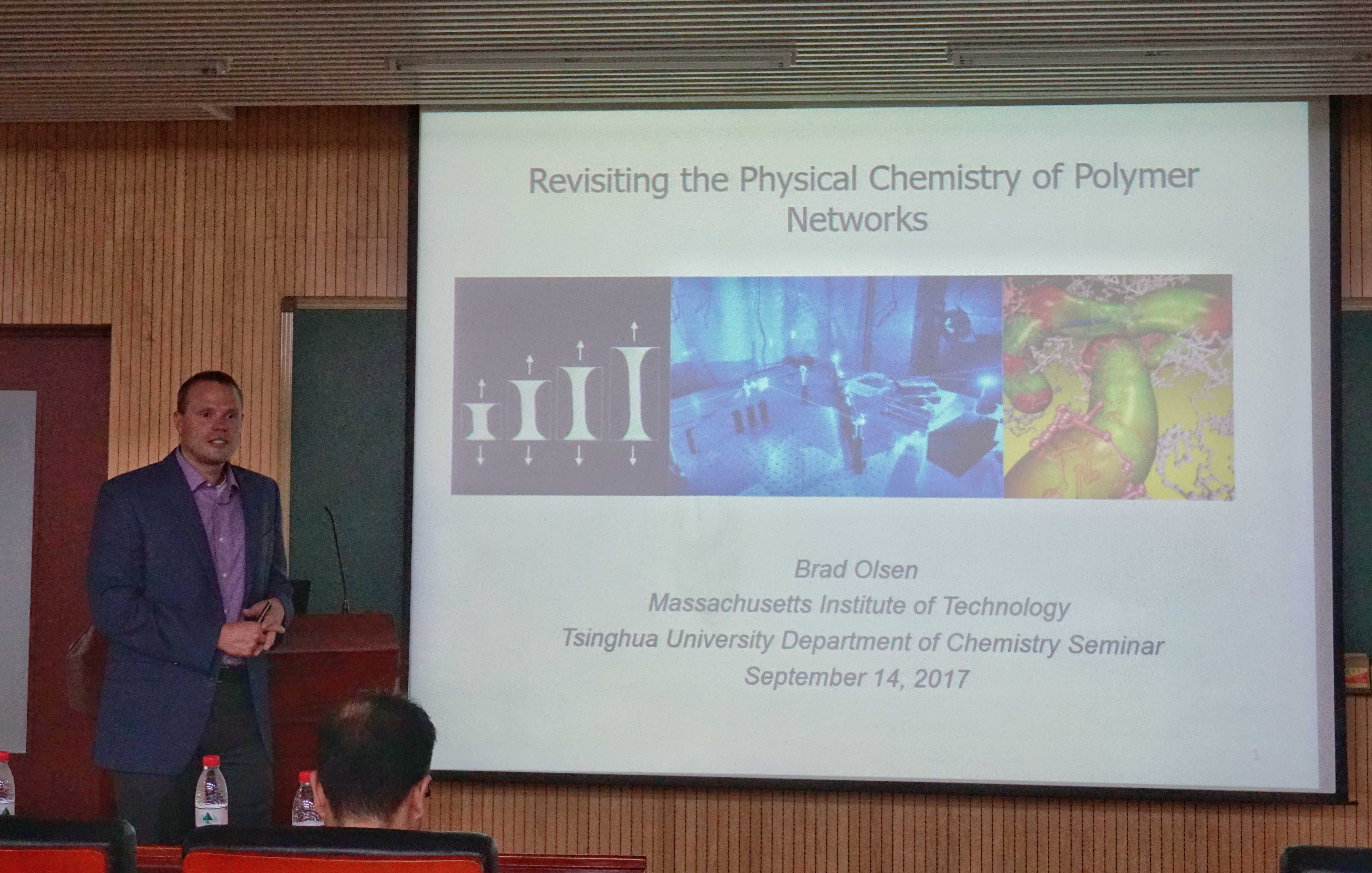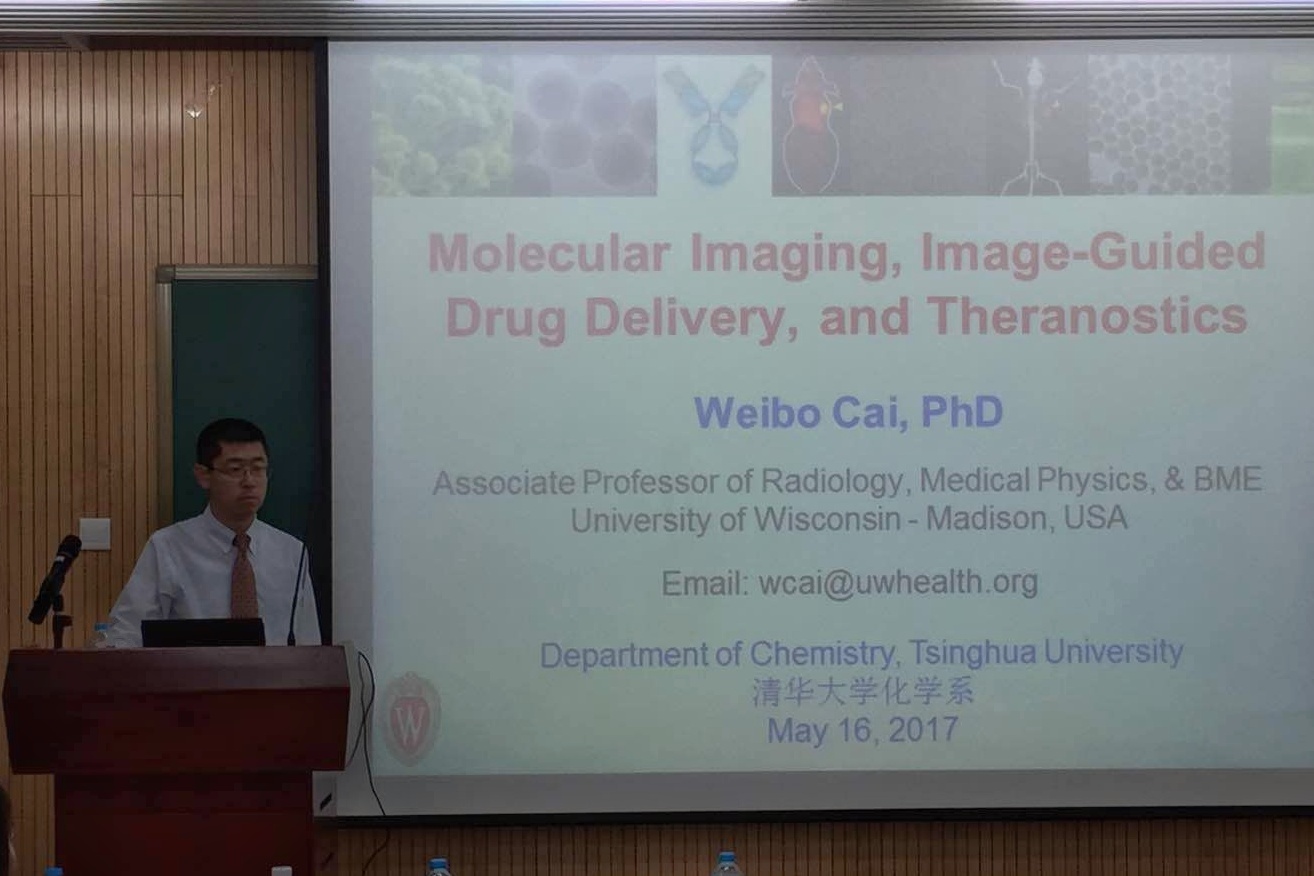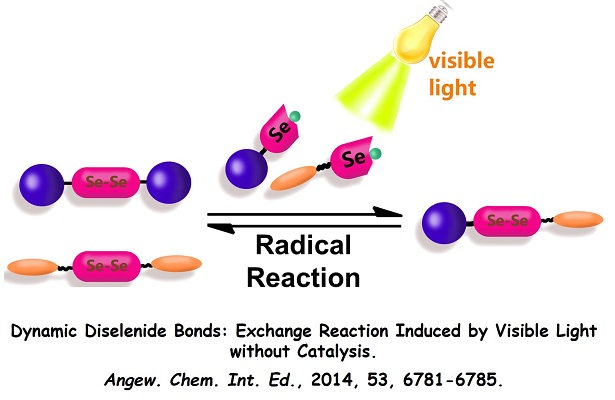Feng Li, Tianyu Li, Chenxing Sun, Jiahao Xia, Yang Jiao and Huaping Xu
Angew.Chem. Int.Ed., 2017, 56, 9910–9914
Heteroatom doping is an effective way to adjust the fluorescent properties of carbon quantum dots. However, selenium-doped carbon dots have rarely been reported, eve though selenium has unique chemical properties such as redox-responsive properties owing to its special electronegativity. Herein, a facile and high-output strategy to fabricate selenium- doped carbon quantum dots (Se-CQDs) with green fluorescence (quantum yield 7.6 %) is developed through the hydro-thermal treatment...
More
Author: wanglu
Xu group attended the 2017 Annual National Polymer Congress

Oct. 10th – 14th 2017, Prof. Huaping Xu and Shaobo Ji, Tianyu Li, Jiahao Xia, Fuqiang Fan, Chenxing Sun and Wentian Xiang attended the 2017 Annual National Polymer Congress held in Chengdu, Sichuan.
Prof. Huaping Xu gave an invited presentation of "Newly Designed Construction of Modern Polymer Chemistry Experimental Course" on Oct. 13th and an oral presentation of “ROS-responsive Tellurium-containing Polymers” on Oct. 12th.
Shaobo Ji, Tianyu Li, Jiahao Xia, Fuqiang Fan and Chenxing Sun gave poster presentation on Oct. 11th, respectively.
Tianyu Li and Jiahao Xia received “Best Poster ...
More
Prof. Bradley Olsen visited Tsinghua University and gave a lecture

On Sep. 14th, 2017, Prof. Bradley Olsen from Massachusetts Institute of Technology, USA visited Tsinghua University and gave a lecture about “Revisiting the Physical Chemistry of Polymer Networks”.
In the morning, Shaobo Ji, Tianyu Li and Jiahao Xia introduced their work to Prof. Bradley Olsen, respectively.
More
ACIE, 2014, 53, 6781
Nanomedicine Assembled by Coordinated Selenium-Platinum Complexes Can Selectively Induce Cytotoxicity in Cancer Cells by Targeting the Glutathione Antioxidant Defense System
Feng Li, Tianyu Li, Xuexiang Han, Hao Zhuang, Guangjun Nie, and Huaping Xu
ACS BIOMATER-SCI ENG, 2018, 4, 1954-1962
Selenium is a unique, essential trace element that plays an important role in the antioxidant defense and redox regulation of biological processes. We have reported that novel selenium-containing platinum-based anticancer molecules (EG-Se/Pt) had selective cytotoxicity toward cancer cells. Herein, we found the underlying mechanism of selective cytotoxicity to be closely related to the glutathione antioxidant defense system. Elevated ROS make cancer cells more vulnerable to ...
More
Multi-hierarchical Responsive Polymers: Stepwise Oxidation of a Selenium- and Tellurium-Containing Block Copolymer with Sensitivity to both Chemical and Electrochemical Stimuli
Lu Wang, Wencong Wang, Wei Cao and Huaping Xu
Polym. Chem., 2017, 8, 4520–4527
Nanomaterials with hierarchical responsiveness are of great significance for not only fundamental science but also future biomedical applications due to sophisticated and hierarchical physiological environments. Here, we report a selenium- and tellurium-containing block copolymer that can be stepwise oxidized by both chemical methods and electrochemical methods. Differences in sensitivity to the oxidation of selenium and tellurium were employed. By tuning the concentration of the oxidant and ...
More
Selenium-functionalized Graphene Oxide that Can Modulate the Balance of Reactive Oxygen Species
Jiahao Xia, Feng Li, Shaobo Ji and Huaping Xu
ACS Appl. Mater. Interfaces, 2017, 9, 21413−21421
Graphene oxide (GO) is an important two-dimensional material since it is water soluble and can be functionalized to adapt to different applications. However, the current covalent functionalization methods usually require hash conditions, long duration and sometimes even multi-steps, while noncovalent functionalization is inevitably unstable, especially under physiological environment where competing species exist. Diselenide bond is a dynamic covalent bond and can respond t...
More
Prof. Weibo Cai visited Tsinghua University and gave a lecture

On May 16th, 2017, Prof. Weibo Cai from University of Wisconsin - Madison, USA visited Tsinghua University and gave a lecture about “Molecular Imaging, Imaging-Guided Drug Delivery, and Theranostics”.
More
Selenium-functionalized Metal-Organic Frameworks for Enzyme Mimics
Weiqiang Zhou, Hongfeng Li, Bin Xia, Wenlan Ji, Shaobo Ji, Weina Zhang, Wei Huang, Fengwei Huo and Huaping Xu
Nano Res., 2018, 11, 5761-5768
The development of artificial enzyme mimics has been rapidly growing and attracting more and more attention owing to their remarkable advantages over natural enzymes. Herein, we developed a general and facile method to fabricate an efficient glutathione peroxidase (GPx) mimic by grafting the selenium-containing molecule (phenylselenylbromide: PhSeBr) to the framework of Zr(IV)-based UiO-66-NH2 (UiO-66-Se). With glutathione (GSH) serving as the substrate...
More
Diselenide-Containing Hyperbranched Polymer with Light-Induced Cytotoxicity
Chenxing Sun, Shaobi Ji, Feng Li and Huaping Xu
ACS Appl. Mater. Interfaces, 2017, 9, 12924–12929.
A light-induced cytotoxicity system was fabricated using active diselenide/porphyrin-containing hyperbranched polymer aggregates in aqueous solution through emulsification. When the nanoparticles were irradiated with visible light, 1O2 was produced by the porphyrin photosensitizers in the system, which cleaved the diselenide bonds in the polymer chains and disassembled the nanosystem. Interestingly the oxidized products exhibited cytotoxicity to the MDA-MB 231cell line without using extra antic...
More

